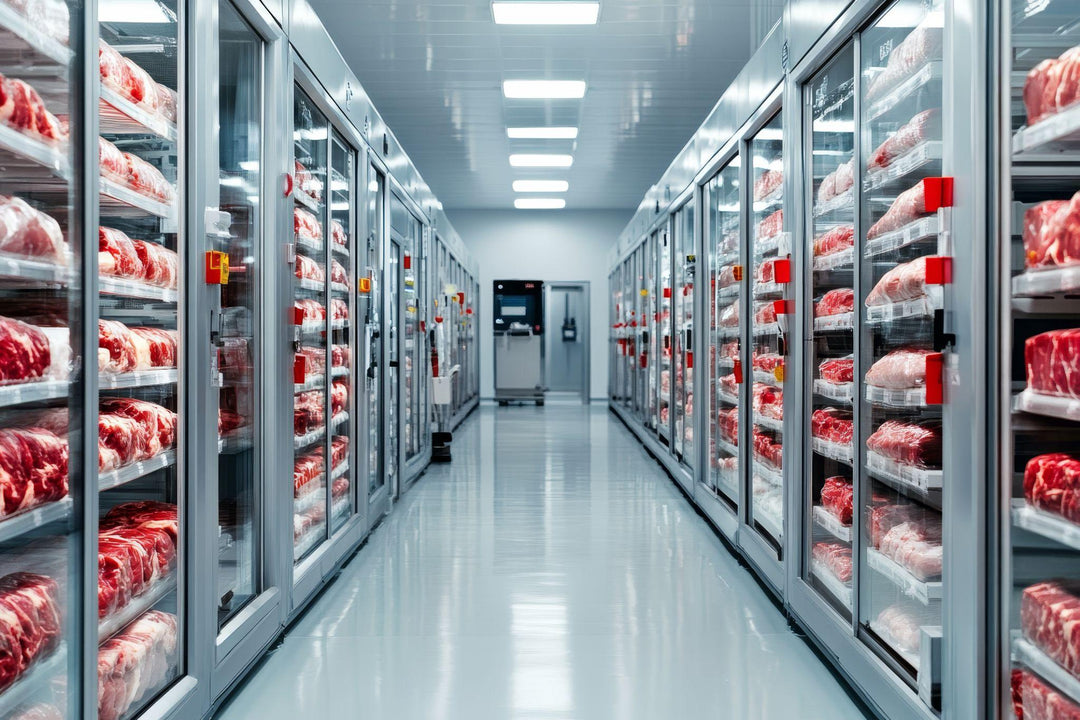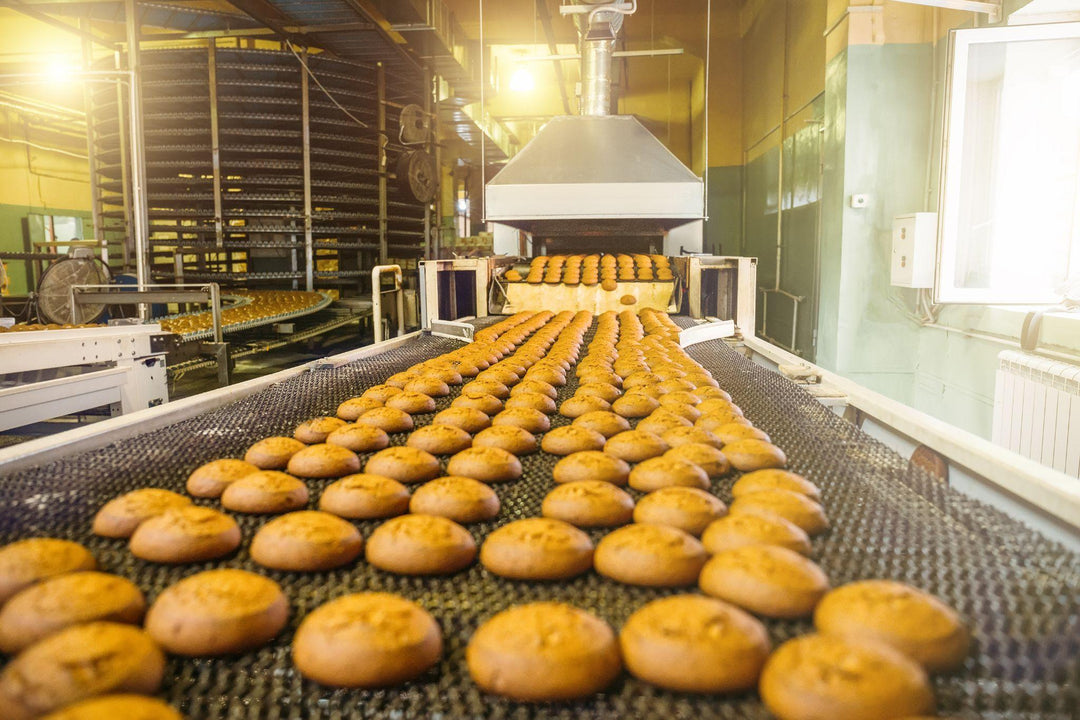The Ultimate Equipment Guide for Efficient Cold Storage Facilities

In the world of temperature-sensitive logistics, cold storage facilities are the backbone of product preservation, whether you're handling frozen meats, fresh produce, vaccines, or seafood.
True efficiency in this sector requires a careful balance of climate control, smart organization, reliable handling equipment, and sanitation-friendly storage systems. As we will see, cold food storage containers are vital components in these environments, ensuring safety and optimizing workflows.
This guide is designed for warehouse managers, supply chain professionals, and others who want to enhance their cold storage operations—from the freezer floor to the shipping dock.
Precision Climate Control: The Core of Cold Storage
At the heart of every cold storage facility design is its refrigeration system. This is where efficiency begins. A stable temperature range is essential—not only to preserve product integrity but also to meet regulatory standards and reduce costly spoilage.
Facilities today rely on a mix of systems: blast freezers for rapid chilling, walk-in coolers for daily operations, and glycol-based systems for consistent temperature delivery across zones. Look for refrigeration setups that offer variable speed compressors and built-in energy optimization features. These allow you to scale your cooling output based on demand, saving energy without sacrificing performance.
Smart temperature monitoring systems are another must. Real-time alerts let your team act fast if a door is left ajar or a mechanical fault occurs. And don’t forget about humidity control—especially for produce or pharmaceuticals—where too much moisture can invite mold, and too little can cause shrinkage or dryness.
In freezer zones, spreaders and related types of cold storage solutions can help promote airflow between stacked containers, thereby supporting faster and more consistent freezing—an often overlooked factor in maintaining temperature integrity across product loads.
The Importance of Thermal Barriers
Keeping the cold air in and the warm air out is a never-ending challenge. Every open door, leaky gasket, or poorly insulated wall invites temperature creep—and increased energy bills.
To maintain climate zones, invest in high-quality thermal barriers. This includes foam-core wall insulation, reinforced flooring with moisture seals, and high-speed roll-up doors that open and close in seconds. Air curtains and strip curtains at dock doors can also reduce warm air infiltration when forklifts are in constant motion.
Zone separation matters too. Many facilities include staging areas or prep zones that sit between ambient and frozen sections. Efficient airflow management and physical separation in these zones can drastically improve energy efficiency and keep your refrigeration units from overworking.
Storage Solutions That Save Time and Product

Well-organized storage reduces spoilage, prevents cross-contamination, and speeds up fulfillment. Durable, stackable containers are essential in this environment—and that’s where Endural’s storage products play a key role. High-quality solutions available from Endural include:
- Spreaders: Endural’s spreaders allow for optimal airflow during freezing, accelerating the process and preventing product from sticking together. They also serve as lids and mid-stack supports, enabling vertical storage without risking spillage or contamination.
- Food Handling Totes: Engineered for use from -60°F to 170°F, these totes are ideal for transporting meat, poultry, and byproducts. Available in FDA-approved natural or black, they’re built for performance in temperature-controlled settings.
- Dish Boxes: Designed for warewashing, transporting silverware, or bussing tables, Endural’s dish boxes are impervious to bacteria and easy to sanitize—an essential part of keeping operations compliant and efficient.
- 360 Heavy-Duty Stacking Boxes: These rugged boxes resist chemicals, solvents, and physical stress. They're excellent for storing heavier items, large cuts of meat, or bulk ingredients in freezer conditions.
- Stacking Modular Tote Boxes: When efficiency and accessibility are top priorities, these boxes provide secure stacking and long-term reliability.
- Nest Boxes: Perfect for operations that require flexible storage, these boxes nest inside one another when not in use, saving space while maintaining cold resistance and durability.
- Utility Pans and Trays: Smaller items and tools need their own place. These trays are ideal for organizing prep supplies, utensils, or smaller components in clean, easy-to-access containers.
These solutions help cold storage warehouses and similar facilities reduce clutter and streamline operations—all while meeting food safety standards.
Speed and Safety in Material Handling
In cold environments, time is more than money—it’s comfort and safety too. The longer a team member is exposed to ultra-low temperatures, the higher the risk of fatigue or error. That’s why material handling equipment should be optimized for cold environments.
Cold-rated pallet jacks and forklifts feature insulated components and hydraulics that remain fluid in freezing conditions. Choose models with enclosed cabs or heated grips for operator safety and productivity.
Fixed systems like conveyors and pallet tunnels are also important, especially in high-volume operations. Conveyors streamline movement between temperature zones while minimizing worker exposure to cold environments. Pallet tunnels—enclosed, insulated lanes for moving goods—help maintain temperature stability during transfer or staging.
Lightweight, easy-to-carry containers—such as totes or dish boxes—also reduce strain during manual handling and improve workflow efficiency in cold zones.
Endural’s spreaders are purpose-built for cold storage applications. When stacked with meat lugs, these cold storage containers allow for optimal airflow, accelerating freezing time to 12–14 hours. The design also enables products to release cleanly from the containers, reducing contamination risk and making handling safer and more efficient.
Smart Monitoring and Inventory Control
You can’t improve what you can’t measure. That’s why cold storage facilities benefit from digital inventory systems that integrate with temperature sensors, barcode or RFID readers, and warehouse management software (WMS).
Modern WMS tools let you track what’s coming in, what’s going out, and how long each product has been stored—critical data when shelf life and safety are on the line. Integrated alerts ensure inventory that approaches expiration or strays from its required temperature zone is flagged for action.
Energy management software adds another layer of efficiency. These systems analyze consumption patterns and detect energy leaks or inefficiencies you might not spot manually. Over time, the savings can be substantial.
Designing for Sanitation and Compliance
A cold storage facility must be more than efficient—it has to be clean. Bacteria love damp, hidden crevices, which is why your cold storage equipment should be designed with sanitation in mind.
Dedicated washing stations are a vital component in this process. Having a centralized cleaning area—ideally with stainless steel fixtures, high-pressure sprayers, and proper drainage—ensures compliance and reduces cross-contamination risks.

All surfaces should be smooth, non-porous, and easy to hose down or wipe clean. NSF-listed containers and shelving are recommended for food contact zones. Drain placement, floor slope, and ventilation also play a role in sanitation strategy.
Cold storage facilities must comply with strict industry regulations depending on the products they store. For example, FDA guidelines govern cold chain handling for pharmaceuticals and vaccines, while USDA and HACCP protocols apply to meat, poultry, and dairy storage. Facility layout and storage equipment must conform to these standards.
Choosing cold storage equipment made from FDA-approved materials, like Endural’s totes, spreaders, and other HDPE containers, helps facilities meet regulatory requirements from day one by resisting the harm caused by bacteria, cleaning agents, and repeated sanitization cycles.
Efficiency Starts with the Right Tools
Choose cold storage equipment that’s durable, easy to maintain, and tailored to these environments—and your facility will be ready for whatever the supply chain throws your way. As always, Endural is here to support your efforts by providing high-quality material handling solutions you can trust.




